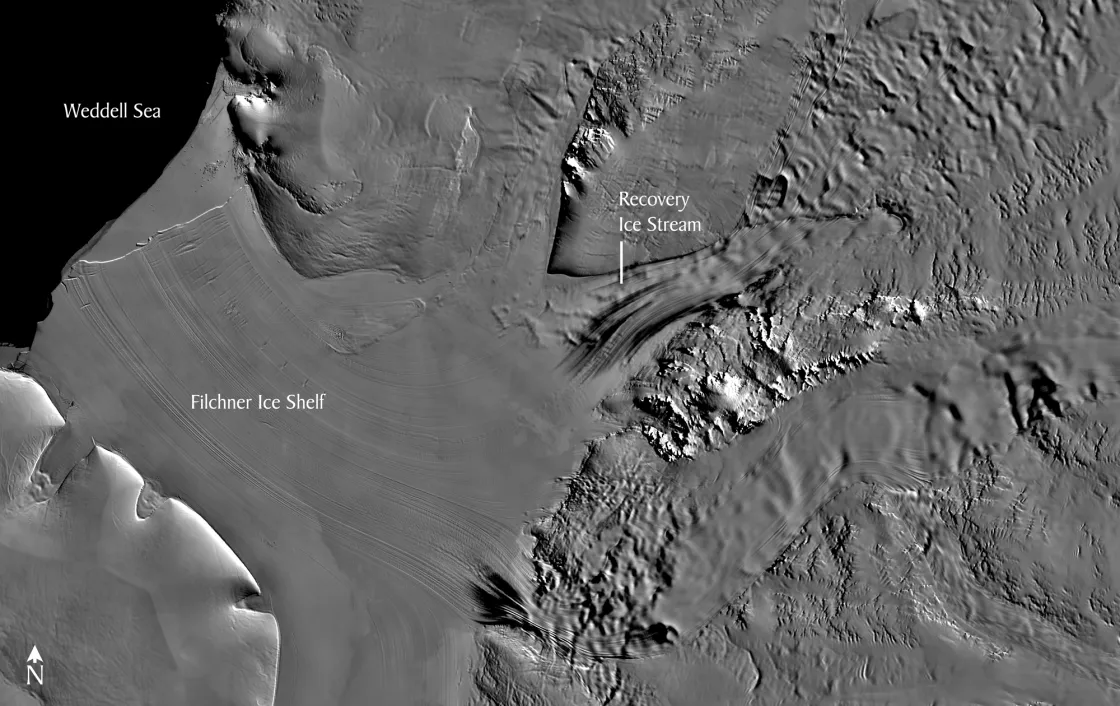The National Snow and Ice Data Center (NSIDC) is part of the Cooperative Institute for Research in Environmental Sciences at the University of Colorado Boulder.
Powerful winds are vaporizing and removing massive amounts of snow from Antarctica, according to a new study published today in the journal Geophysical Research Letters. The finding could shift estimates of how much the ice-covered continent is contributing to sea level rise.
Scientists have thought that most of the snow scoured from Antarctica’s surface was simply redeposited elsewhere. However, researchers from the United States and the Netherlands found that winds vaporize (sublimate) or remove (ablate) 90 percent of the snow in the continent’s wind-scour zones, an estimated 80 billion tons per year.
Wind-scour zones cover roughly 7 percent of the remote continent. These occur where East Antarctica’s katabatic winds—caused by dense, cold air sinking and flowing off the continent—have persistently ablated the ice surface, in some cases for centuries.
The study investigates the Recovery Ice Stream in East Antarctica where the powerful winds have removed as much as 18 meters (more than 50 feet) of snow—equal to 200 years of snow accumulation. The ablation and sublimation carved out pockets that are eroding the surface as fast as the ice flows into the area, preserving the surface shape but removing a lot of snow. Recovery Ice Stream is one of thousands of similar wind-scour zones identified by satellite data.
Indrani Das of the Lamont-Doherty Earth Observatory (LDEO) at Columbia University led the study. Ted Scambos, lead scientist at NSIDC, and Michiel van den Broeke of the University of Utrecht are coauthors in this study and collaborated on earlier studies leading to the GRL result.
Das estimates that because of the sublimation, climate models have been overestimating surface mass by more than 80 billion tons per year. “This impacts the surface snow accumulation estimates of most major glaciers and ice streams of East Antarctica,” Das said.
“What we’re seeing is that East Antarctica—already among the driest regions on Earth—is a bit drier than we thought,” Scambos said. “It’s more likely that it is losing ice, and adding to sea level.”
In most of Antarctica, climate models miss snow loss in the scour zones because they occur on a relatively small spatial scale. Climate modelers involved in the study are now planning to increase their model’s resolution to 5.5 kilometer (3.42 miles), about five times sharper than previous models. They are also incorporating many parameters of blowing and sublimating snow and the physics of katabatic winds. They expect the next model update in 2016.
Das, Scambos, and Van den Broeke worked with coauthors Lora Koenig of NSIDC and Jan Lenaerts of the Institute for Marine and Atmospheric Research at Utrecht University, Netherlands.
Reference
Das, I., T. A. Scambos, L. S. Koenig, M. R. van den Broeke, and J. T. M. Lenaerts (2015), Extreme wind-ice interaction over Recovery Ice Stream, East Antarctica, Geophys. Res. Lett. , 42, doi:10.1002/2015GL065544.
Dowload a PDF copy of the study here.
Media Contacts
National Snow and Ice Data Center
press@nsidc.org, +1.303-492-1497
Kevin Krajick
Lamont-Doherty Earth Observatory
kkrajick@ldeo.columbia.edu, +1.212.854.9729
-end-
